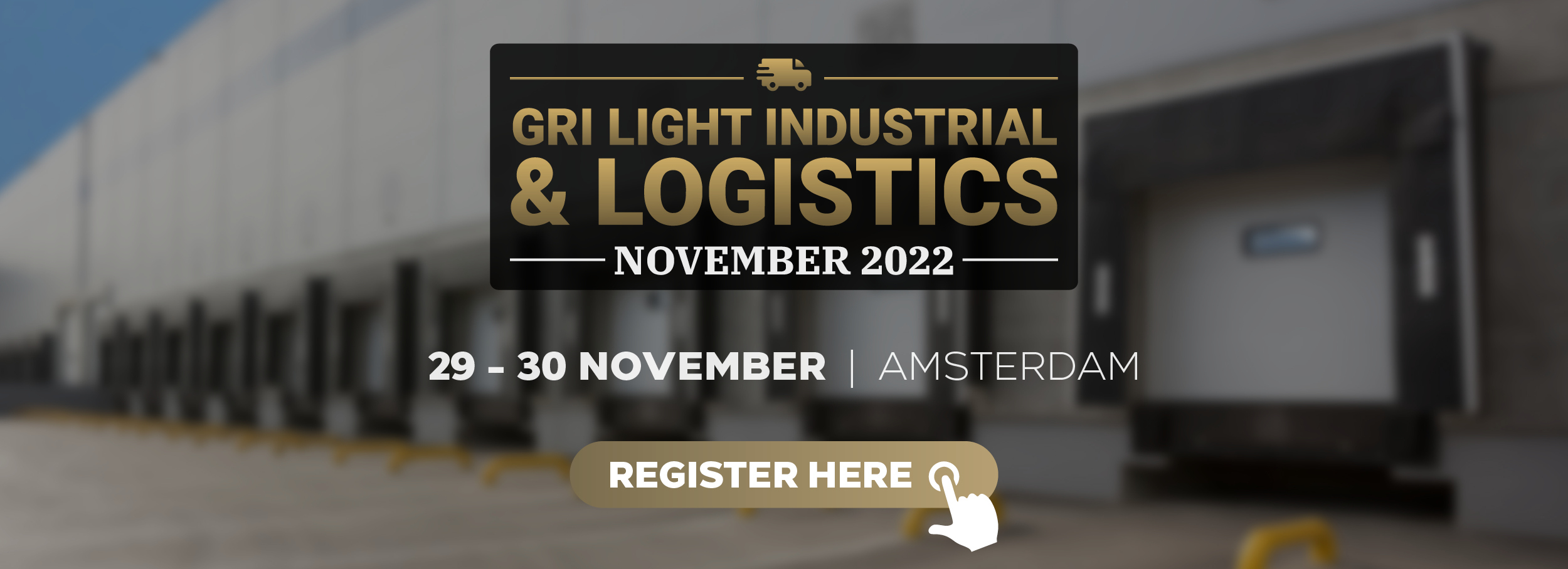 Credit: Maxxyustas/ Envato
Credit: Maxxyustas/ EnvatoLogistics in Central and East Europe will continue to grow
Post-Covid and war in Ukraine have led to an increase inflation on Europe, but also opens opportunities in the logistics sector
August 5, 2022Real Estate
The logistic market in Poland and other Central and Eastern European countries has experienced a growth in development over the last few years. According to a 7R and Colliers report about the Polish Logistics and Industrial Sector, 2021 was a record year in terms of supply and demand.
The report says that the investment market in Poland recorded an increase in terms of logistics and industrial projects in 2021, which are held accountable for almost 50% of the capital committed, that is around €3 billion.
One of the most important accelerators of this development was, in fact, the Covid-19 pandemic, despite all the problems it brought, mostly because of its significant change in consumer behaviour and habits, especially in the e-commerce sector.

The latter opens an opportunity for companies, says Noah Steinberg, Wing Chairman and CEO in an interview for GRI Club. According to him, increase in online e-commerce led to increase in demand in logistics space to provide shorter delivery time. Disruption in the supply chains caused by Covid led companies to seek nearshoring solutions.
“One trend is the increase of online sales, which also demands an increase of storage. Another is the importance of securing the supply chains for commercial and manufacturing companies”, says Steinberg.
A few years ago, they were looking for the cheapest solution, he explains, but now they prefer storage facilities and suppliers close to home, which can assure all the parts they need for their business to be available. That is a great opportunity for companies like Wing, that provides the right specification of building in the right space.
Richard Wilkinson, CTP Invest CFO, reassures that the logistics sector is very strong and the demand will continue to come for the next year or so. “For now we see significant tenant demand”, he told us in an interview.
However, there is a big challenge Europe is facing: “The challenge is for all developers, frankly. At a macro level, clearly the Ukraine war has caused an impact on business worldwide, and COVID, their on-going ramification”, says Christopher Zeuner, 7R’s Chief Investment Officer, in another interview for GRI Club. “Inflation is the key-element that everybody is talking about.”
Zeuner affirms that construction costs have recently had a 30-35% increase in Poland, and besides a slight drop down, the market can not expect to go back to the levels seen 12 months ago. He emphasises the strength of the logistics market, which proved itself as a surprisingly resilient one during the pandemic.
“On one side, the war is making things a little harder at construction, in terms of getting resources, people and material. The other side is that there is tight supply in Poland, and we are seeing rental growth. The moment is slightly disconnected between where rental growth has to catch up to where costs increase has got too. But that is something that is going to happen, it is happening as we speak at the moment.”, he says.
That vision is shared with Wilkinson, and he explains that although the costs in construction increased, the rent costs are increasing as well. “And the costs have reached their peak and already begun to decrease.”
The macroeconomic analysis from 7R and Colliers report puts the prolonged war between Russia and Ukraine as a major challenge as it deteriorates the investment attractiveness and increases the financial instability and high inflation.
As the main effects, points to an increase in both base and effective rents, higher service charges and utility prices, chances in terms and conditions of leases, extending construction times and delays in starting new facilities, new tenants from the East, fewer new investors from the West, and other ones.
Furthermore, the report says that migration increasing population can result in an increasing workforce, which solves one of the construction problems appointed by Zeuner. Poland’s population has exceeded 40 million for the first time in its history, and population growth also drives the retail and e-commerce sectors.
This combined with an increase in investment attractiveness for entities from Eastern Europe, that before were investing in Russia or Ukraine, can be major opportunities for all developers. “Logistics is a winning sector and will continue to be and now everyone it’s recognizing that”, affirms Wilkinson.
According to the Colliers report, green solutions in industrial and logistics facilities make it possible to achieve up to 50% lower maintenance costs in terms of energy consumed or a reduction in power consumption of up to 60%.
For 7R, it is a journey with no short answer and a long path, but the logistics market is opened for players' collaboration and exchange in knowledge, to learn from each other and grow together. As for Wing, green buildings are a demand from global investors, but it is also important because we all live on this planet as well.
“At CTP we have worked with green buildings for a few years”, told Wilkinson. “So we can say that all of them are green”. CTP also thinks it is important to not only look for the buildings but also the facilities environment, and the people who live there, so all can be really sustainable in short and long terms.
Subscribe to GRI Insights to stay ahead of real estate’s relevant news from Europe.
Wing, which already operates in Hungary and Poland, is now looking to Western Europe: “There is a very strong demand for space; people need to store things in a variety of fields”, says Steinberg, “and Wing is providing space that the market needs”. They are taking advantage of opportunities by providing the right specification of building in the right space.
“We are the second largest company in Poland”, affirms Zeuners, and now it is time to look at the assets they already have there, but also 7R is seeking opportunities in Czech Republic and Germany to expand their portfolio.
For CTP, all the countries they operate are full of opportunities: “We have operations in ten markets at the moment, and all of them have something different and exciting.” He cites Romania as one of the focuses, as Serbia, Bulgaria, and Turkey. “Romania has been one of the fastest growing disposable incomes in Europe. And Serbia is a big country 20 years behind the rest of Europe in some ways, but which, in the long term, will catch up.”
Written by Gabriela Colicigno
The report says that the investment market in Poland recorded an increase in terms of logistics and industrial projects in 2021, which are held accountable for almost 50% of the capital committed, that is around €3 billion.
One of the most important accelerators of this development was, in fact, the Covid-19 pandemic, despite all the problems it brought, mostly because of its significant change in consumer behaviour and habits, especially in the e-commerce sector.

The latter opens an opportunity for companies, says Noah Steinberg, Wing Chairman and CEO in an interview for GRI Club. According to him, increase in online e-commerce led to increase in demand in logistics space to provide shorter delivery time. Disruption in the supply chains caused by Covid led companies to seek nearshoring solutions.
“One trend is the increase of online sales, which also demands an increase of storage. Another is the importance of securing the supply chains for commercial and manufacturing companies”, says Steinberg.
A few years ago, they were looking for the cheapest solution, he explains, but now they prefer storage facilities and suppliers close to home, which can assure all the parts they need for their business to be available. That is a great opportunity for companies like Wing, that provides the right specification of building in the right space.
Richard Wilkinson, CTP Invest CFO, reassures that the logistics sector is very strong and the demand will continue to come for the next year or so. “For now we see significant tenant demand”, he told us in an interview.
However, there is a big challenge Europe is facing: “The challenge is for all developers, frankly. At a macro level, clearly the Ukraine war has caused an impact on business worldwide, and COVID, their on-going ramification”, says Christopher Zeuner, 7R’s Chief Investment Officer, in another interview for GRI Club. “Inflation is the key-element that everybody is talking about.”
War and inflation
The war in Ukraine affects the logistic market with a mix of opportunities and challenges. The prices have gone up in all real estate sectors, but industrial and logistics are particularly sensitive to construction costs, according to Steinberg. “War and post-Covid, inflation are the main challenges. And their impact is still open to be seen”, he says.Zeuner affirms that construction costs have recently had a 30-35% increase in Poland, and besides a slight drop down, the market can not expect to go back to the levels seen 12 months ago. He emphasises the strength of the logistics market, which proved itself as a surprisingly resilient one during the pandemic.
“On one side, the war is making things a little harder at construction, in terms of getting resources, people and material. The other side is that there is tight supply in Poland, and we are seeing rental growth. The moment is slightly disconnected between where rental growth has to catch up to where costs increase has got too. But that is something that is going to happen, it is happening as we speak at the moment.”, he says.
That vision is shared with Wilkinson, and he explains that although the costs in construction increased, the rent costs are increasing as well. “And the costs have reached their peak and already begun to decrease.”
The macroeconomic analysis from 7R and Colliers report puts the prolonged war between Russia and Ukraine as a major challenge as it deteriorates the investment attractiveness and increases the financial instability and high inflation.
As the main effects, points to an increase in both base and effective rents, higher service charges and utility prices, chances in terms and conditions of leases, extending construction times and delays in starting new facilities, new tenants from the East, fewer new investors from the West, and other ones.
Furthermore, the report says that migration increasing population can result in an increasing workforce, which solves one of the construction problems appointed by Zeuner. Poland’s population has exceeded 40 million for the first time in its history, and population growth also drives the retail and e-commerce sectors.
This combined with an increase in investment attractiveness for entities from Eastern Europe, that before were investing in Russia or Ukraine, can be major opportunities for all developers. “Logistics is a winning sector and will continue to be and now everyone it’s recognizing that”, affirms Wilkinson.
What the future holds
The ESG trend cannot be ignored by anyone; the establishment and maintenance of warehouses or factories in accordance with the assumptions of sustainable construction and development is also an important trend and market standard.According to the Colliers report, green solutions in industrial and logistics facilities make it possible to achieve up to 50% lower maintenance costs in terms of energy consumed or a reduction in power consumption of up to 60%.
For 7R, it is a journey with no short answer and a long path, but the logistics market is opened for players' collaboration and exchange in knowledge, to learn from each other and grow together. As for Wing, green buildings are a demand from global investors, but it is also important because we all live on this planet as well.
“At CTP we have worked with green buildings for a few years”, told Wilkinson. “So we can say that all of them are green”. CTP also thinks it is important to not only look for the buildings but also the facilities environment, and the people who live there, so all can be really sustainable in short and long terms.
Subscribe to GRI Insights to stay ahead of real estate’s relevant news from Europe.
Wing, which already operates in Hungary and Poland, is now looking to Western Europe: “There is a very strong demand for space; people need to store things in a variety of fields”, says Steinberg, “and Wing is providing space that the market needs”. They are taking advantage of opportunities by providing the right specification of building in the right space.
“We are the second largest company in Poland”, affirms Zeuners, and now it is time to look at the assets they already have there, but also 7R is seeking opportunities in Czech Republic and Germany to expand their portfolio.
For CTP, all the countries they operate are full of opportunities: “We have operations in ten markets at the moment, and all of them have something different and exciting.” He cites Romania as one of the focuses, as Serbia, Bulgaria, and Turkey. “Romania has been one of the fastest growing disposable incomes in Europe. And Serbia is a big country 20 years behind the rest of Europe in some ways, but which, in the long term, will catch up.”
Written by Gabriela Colicigno







